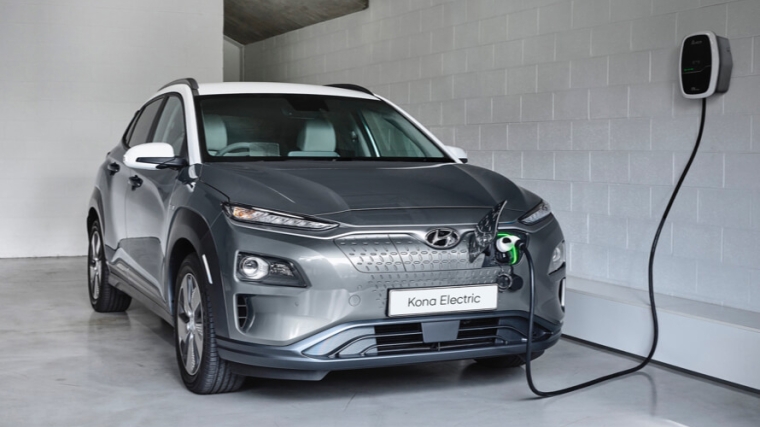
We have previously looked at the sharp decline in 2020 car sales and now want to delve into the dominant segment of our new car sales - those for SUVs.
The share SUVs won rose in this declining new car market and is now up to 77%, a record high. 'Standard' sedans are no longer very standard, more the outlier these days, the specialist niche.
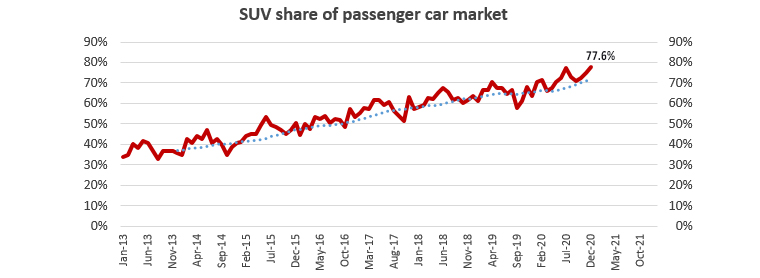
SUVs are the presumptive standard, and actually have been since early 2016. Since 2017 they have never had less than 50% market share, even in a 'bad' month.
But the SUV segment is changing too.
It is shrinking. It is so dominant it can no longer avoid the overall market direction.
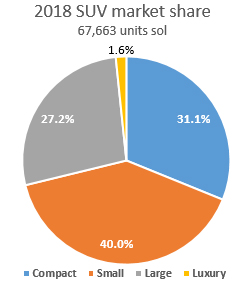
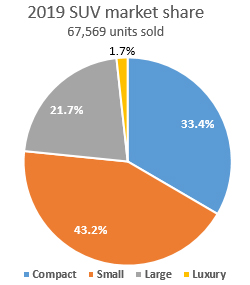
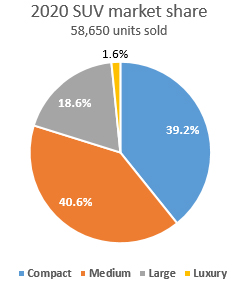
And the share that the smaller versions of the class is winning is rising.
The large and luxury versions have seen their share decline from 2018 from a 28.8% share to just a 20.2% share in 2020. That is a decline of -40% or -7658 vehicles in the two years from 2018 to 2020.
The compact and medium versions have seen their sales dip just -3% or -1355 in the same period, now garnering a 61.1% share in 2020.
For 2021 however we will be watching an additional aspect - now many are NEVs ("new energy vehicles") which covers electric-petrol hybrids, all-electrics, and the coming hydrogen-powered alternatives that have yet to reach New Zealand.
In 2020, across all classes of new passenger cars, only 10,939 NEVs sold in the year for a 13.5% share. That included 8664 hybrids, 1519 pure electrics, and 756 PHEVs (plug-in hybrids). In 2019 there were a total of 8658 NEVs sold, or an 8.3% share. Interestingly both pure electrics (-338) and PHEVs (-170) both sold less in 2020 than 2019. Only the non-plug-in hybrids made volume gains in 2020, rising from 5875 to 8664 or almost a +50% rise.
It is uncertain when hydrogen fuel cell cars will be released here. The next big innovation will be wireless charging for EVs which is likely to come soon.
9 Comments
"The next big innovation" for EVs is dedicated EV platforms - currently cars like the E-Golf and Kona are built on platforms optimised for internal combustion engines. More mass-market EVs this year will be built on roller skate, EV-specific platforms with the batteries in the chassis as opposed to wedged under the seats, with updated inverters and cooling which will enable better designs. On top of that, battery chemistries with BMS systems that can manage heat and faster charging times without damaging battery life will mean fast-charging times can be reduced dramatically. There'll also be improved AC charging for most models, so home-charging on garage wallboxes will be faster too. This is not a vague "some time in the next two years" thing - it's going to happen this year.
The inclusion of non plug-in hybrids skews the picture here. Surely they are really a more efficient ICE rather than new energy? On the question for pure EV numbers it could be the Telsa model 3 impact where there were lots of deliveries when the model became available in 2019. There were 653 delivered in the months from August 2019 to December 2019, many of which were ordered years before. 2020 saw 511 delivered with 150 alone in September/October when a large number of non ordered vehicles arrived. With Covid etc I wonder if supply is half the issue.
Yes, Tesla generally deliver to RHD markets in quarterly batches based on shipping schedules. New factories in Berlin and Shanghai may change this arrangement in 2021/22.
I wouldn’t expect to see much in the passenger vehicle hydrogen space any time soon. It’s better suited to heavy vehicle transport and is even more expensive than battery EVs, plus the fuel cells only last 5 years. Hyundai conveniently leave that part out of their goldfish ad on TV!
SR+ leaving Auckland with 98% SOC arrived in Taupo with 16% SOC, so 82% of charge took me 274km. 100% would be 334km on open road driving. I’d get a lot more in urban driving. However as you no doubt know, when you are away from home you tend to charge to 80% or 90% so the real world range is less. That said, I have no range anxiety. I expect to do 24,000 km this year.
People buy SUVs so they can see past the other SUVs that pull up to the right of them at a roundabout or intersection and never, ever bother to stay a bit back so the sedan beside them can get a clear view, even when they can see over the top of the sedan when making a right turn from an intersection. SUV drivers tend imho to be oblivious or cavalier about other drivers on the road.

We welcome your comments below. If you are not already registered, please register to comment.
Remember we welcome robust, respectful and insightful debate. We don't welcome abusive or defamatory comments and will de-register those repeatedly making such comments. Our current comment policy is here.